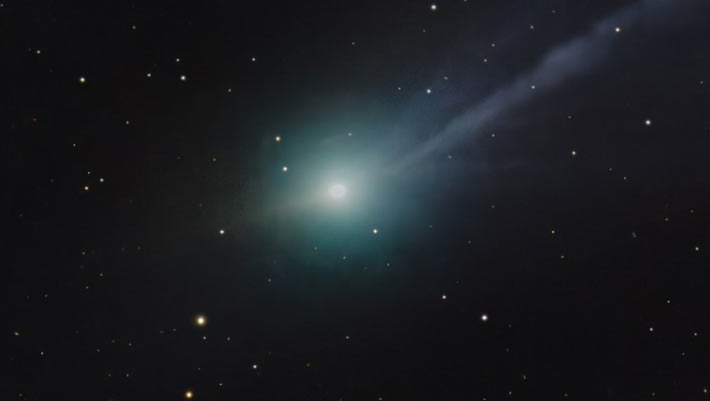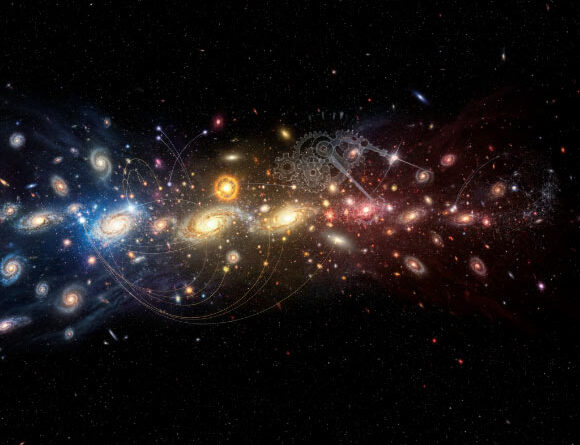
Astronomers using the NASA/ESA Hubble Space Telescope have captured a striking new photo of LEDA 12535, a barred spiral galaxy situated in the famous Perseus cluster.
This Hubble image shows LEDA 12535, a barred spiral galaxy some 320 million light-years away in the constellation of Perseus. The color composite was assembled from images taken by Hubble’s Wide Field Camera 3 (WFC3) in ultraviolet, visible, and near-infrared light. It is based on data obtained through three filters. The color results from assigning different hues to each monochromatic image associated with an individual filter. Image credit: NASA / ESA / Hubble / I. Chilingarian.
LEDA 12535 is located approximately 320 million light-years away in the constellation of Perseus.
Also known as MCG+07-07-072 or SDSS J032041.39+424814.8, it is classified as a barred spiral galaxy.
“LEDA 12535 has quite an unusual shape, for a spiral galaxy, with thin arms emerging from the ends of its barred core to draw a near-circle around its disk,” the Hubble astronomers said.
“It is classified, using a common extension of the basic Hubble scheme, as an SBc(r) galaxy: the c denotes that its two spiral arms are loosely wound, each only performing a half-turn around the galaxy, and the (r) is for the ring-like structure they create.”
“Rings in galaxies come in quite a few forms, from merely uncommon, to rare and astrophysically important.”
“Lenticular galaxies are a type that sits between elliptical and spiral galaxies,” the astronomers added.
“They feature a large disk, unlike an elliptical galaxy, but lack any spiral arms.”
“Lenticular means lens-shaped, and these galaxies often feature ring-like shapes in their disk.”
“Meanwhile, the classification of ring galaxy is reserved for peculiar galaxies with a round ring of gas and star formation, much like spiral arms look, but completely disconnected from the galactic nucleus — or even without any visible nucleus.”
“They’re thought to be formed in galactic collisions.”
“Finally, there are the famous gravitational lenses, where the ring is in fact a distorted image of a distant, background galaxy, formed by the ‘lens’ galaxy bending light around it.”
“Ring-shaped images, called Einstein rings, only form when the lensing and imaged galaxies are perfectly aligned.”
As an Amazon Associate I earn from qualifying purchases.







